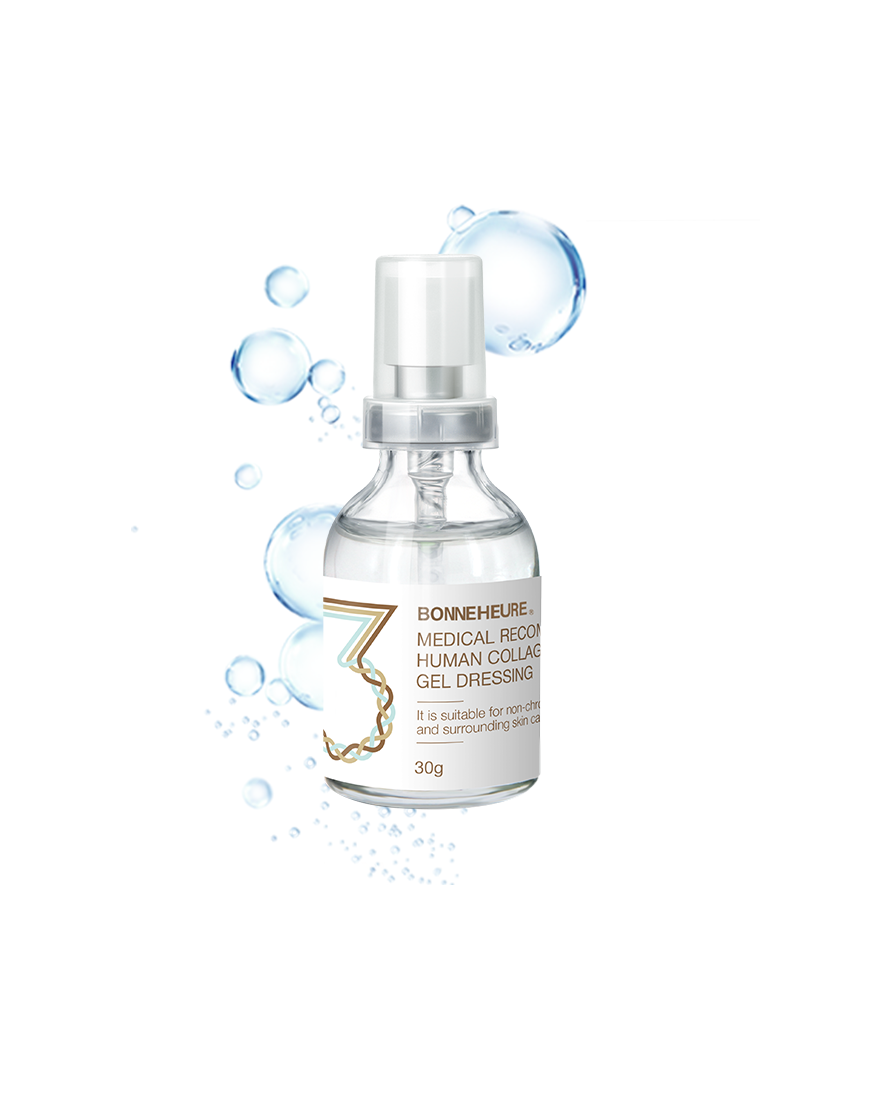What is the difference between D-nutrimec collagen repair products and other similar products?
Medical Grade vs Cosmetic Grade
D-nutrimec biological recombinant collagen adopts the latest collagen fermentation technology in the industry. The main application scenario of this collagen is damaged skin. When the skin is damaged after medical aesthetics, various skin discomforts, or encounters trauma, D-nutrimec collagen can play a rapid repair effect. At the same time, it can also effectively reduce inflammatory responses and build a solid line of defense for the skin.
Cosmetic-grade products are mainly aimed at daily basic care for healthy skin, and moisturize and nourish through ingredients such as moisturizers and plant extracts, but lack targeted solutions for professional needs such as post-operative repair of medical aesthetics and pathological injuries; medical-grade products need to comply with medical device or drug regulatory standards, and their formulas have undergone a triple scientific verification system of raw material screening, efficacy verification, and safety assessment, showing significant advantages in clinical scenarios such as wound healing, barrier reconstruction, and complication prevention.
Humanized Collagen vs Human-like Collagen
Human-like collagen: Human-like collagen contains non-human fragments. Although it can play a certain role as collagen, its activity is relatively low. At the same time, non-human fragments will also cause the risk of immune rejection and are less safe.
BONNEHEURE: BONNEHEURE recombinant collagen is a 100% human recombinant collagen with a full length of 1068 amino acids. It has higher activity and a faster and better repair effect. At the same time, it does not contain non-human fragments, so there is no risk of rejection and allergies.
Large Molecules vs Small Molecules
D-nutrimec Biorecombinant Collagen 1068 is a macromolecular collagen with a molecular weight of up to 130,000 Daltons. It has a complete human collagen structure and can fully exert the full function of human collagen, guide the orderly growth of skin cells, and inhibit the formation of scars.
Although small molecule collagen also has its unique effects, its functions are relatively limited. Small molecule collagen, which is usually about 500-3000 Daltons, lacks a complete spatial structure and its main function is limited to providing nutrition to the skin and promoting skin self-growth.
Long collagen vs short collagen
The amino acid sequence of D-nutrimec biorecombinant collagen reaches 1068 amino acids, which is consistent with the amino acid sequence of human type III collagen. It has nearly 200 functional domains, exerting the biological function of human collagen. The complete function of long collagen shows great advantages in skin repair.
Most short collagens are often fragmented or spliced, and their functions are incomplete. They may have certain effects in some aspects, but they cannot fully exert the biological functions of collagen like long collagen. The function of short collagen is relatively incomplete, and it only has a nutritional effect on the skin, and its repair effect is not as good as long collagen.
Live Collagen vs Dead Collagen
Collagen is a very active substance, and its activity determines its efficiency in the repair process.
D-nutrimec Bio uses a 10,000-level + partial 100-level purification workshop, which provides an ideal environment for the production of collagen. Products produced in such a purification workshop can meet the standards without irradiation, thereby maximizing the activity of collagen.
Most other companies use ordinary workshops of 100,000 levels. Due to the limitations of the production environment, the products need to be irradiated and sterilized. However, the irradiation process will cause collagen to lose most of its activity, resulting in a significant reduction in the actual effect of the product. Dead collagen is like a body that has lost its vitality. Although it may play some auxiliary roles to a certain extent, it cannot improve the skin condition as deeply as live collagen.
Type III vs Type I
Type I collagen is a bundle-like collagen that is relatively thick and hard. Although the content of type I collagen in the skin is high, in some cases, scars are prone to occur. Its hardness limits the fineness of its repair to a certain extent.
Type III collagen is a reticular fiber that is elastic. In infancy, the content of type III collagen is high and is known as baby collagen. When the skin is damaged, it can only synthesize type I collagen, which easily leads to scar hyperplasia. Supplementing type III collagen can prevent the formation of scars and restore the skin to a more perfect state.
Yeast Fermentation vs E. coli Fermentation
D-nutrimec Bio-recombinant Human Collagen 1068 adopts a new generation of yeast fermentation system. As a eukaryotic organism, the collagen produced by yeast is more similar to human collagen in structure and function. It can ferment more complex macromolecules and long collagen, providing more comprehensive and in-depth care for the skin. At the same time, the yeast fermentation system has higher safety and stability. During the fermentation process, almost no harmful substances are produced, providing reliable protection for subsequent use.
In contrast, the E. coli fermentation system has obvious deficiencies in many aspects. It can only ferment short collagen and fragmented collagen, and cannot produce long collagen with complete structure and powerful functions like yeast. Moreover, the fermented collagen is poor in structure and biological activity, and it is difficult to meet the needs of damaged skin for collagen activity. In addition, E. coli fermentation may also produce harmful substances such as endotoxins, which bring potential risks to the skin.
Hydrating acne toner with aloe vera
Some information about Hydrating acne toner with aloe v […]
Nourishing Toner with Hyaluronic Acid 1%
Some information about Nourishing Toner with Hyaluronic […]
Why Choose This Acne Cream for Unparalleled Skin Clarity
When it comes to achieving clear, radiant skin, finding […]




发表回复